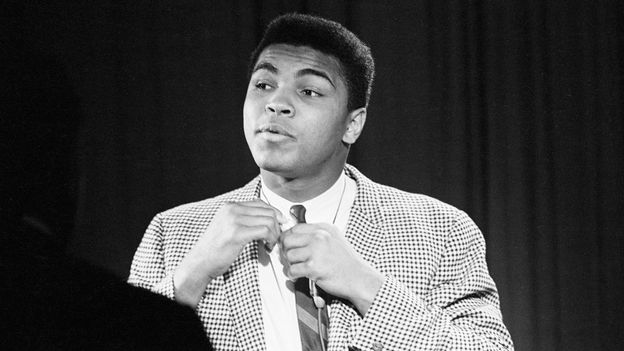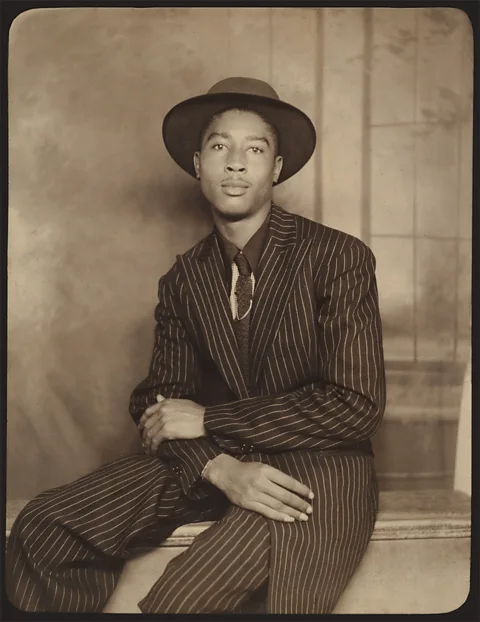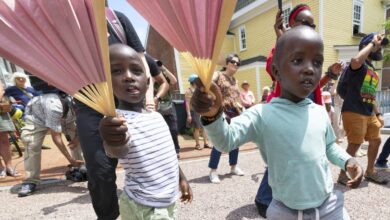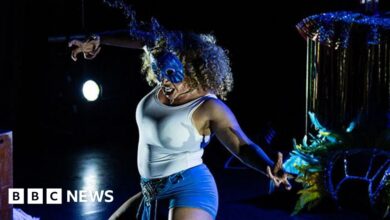How black men have used flamboyant fashion to express pride and resistance

However, in the case of Julius Soubise – manumitted (released from slavery) in the 1760s by his British mistress, the Duchess of Queensbury – the joke was on the aristocrats. Soubise reclaimed and exaggerated the flamboyant clothing that his mistress had made him wear by adding diamond-buckled red-heeled shoes, lace frills and clouds of perfume, and his subversive, startlingly feminised dandyism created shockwaves among white society. Educated, witty and charming, and a capable equestrian, fencer and violinist, he destabilised established categorisations of race, gender and class, and forced a reimagining in the white consciousness of what a black man could be.
 Metropolitan Museum of Art
Metropolitan Museum of ArtWhile Soubise used dandyism to assert visibility, elsewhere in the exhibition, dandyism is shown being used for concealment. It was a form of dressing up that enabled William and Ellen Craft to escape slavery in Georgia in 1848, as told in William’s 1860 memoir. Transgressing – once again – boundaries of race, gender and class, Ellen, the daughter of an enslaved woman and her slaveholder, disguised herself as a white invalid gentleman – complete with jaw bandage and sling, and green-lensed spectacles – in order to escape her captors, while her husband William was passed off as her servant. When William, with freedom in sight, dandified himself with “a very good second-hand white beaver [top hat]” the pair’s cover was almost blown, drawing comments from a disgruntled planter that his “master” was spoiling him. Their escape succeeded, and the two went on to build a new life across the ocean in England.
Later, with the abolition of slavery in 1865, the Crafts were emboldened to move back to the US, while other black Americans began relocating from the rural South to the expanding cities of the North, establishing, for the first time, large black urban communities. One of these was Harlem, New York City, which, during the Harlem Renaissance of the 1920s and 30s, became a centre of creative expression and a manifestation of the black freedom that so many had dreamt of.
A historical throughline
In forging a modern black identity and standing up against lynchings, riots and persistent discrimination, dressing up again played a central role. In 1917, around 10,000 African Americans took part in the Silent Protest Parade down New York’s Fifth Avenue, the men in black tailored suits, the women and children dressed in white. It was a display of respectability, calm and control that contrasted with the savagery of the violence perpetrated against them.
Source link




